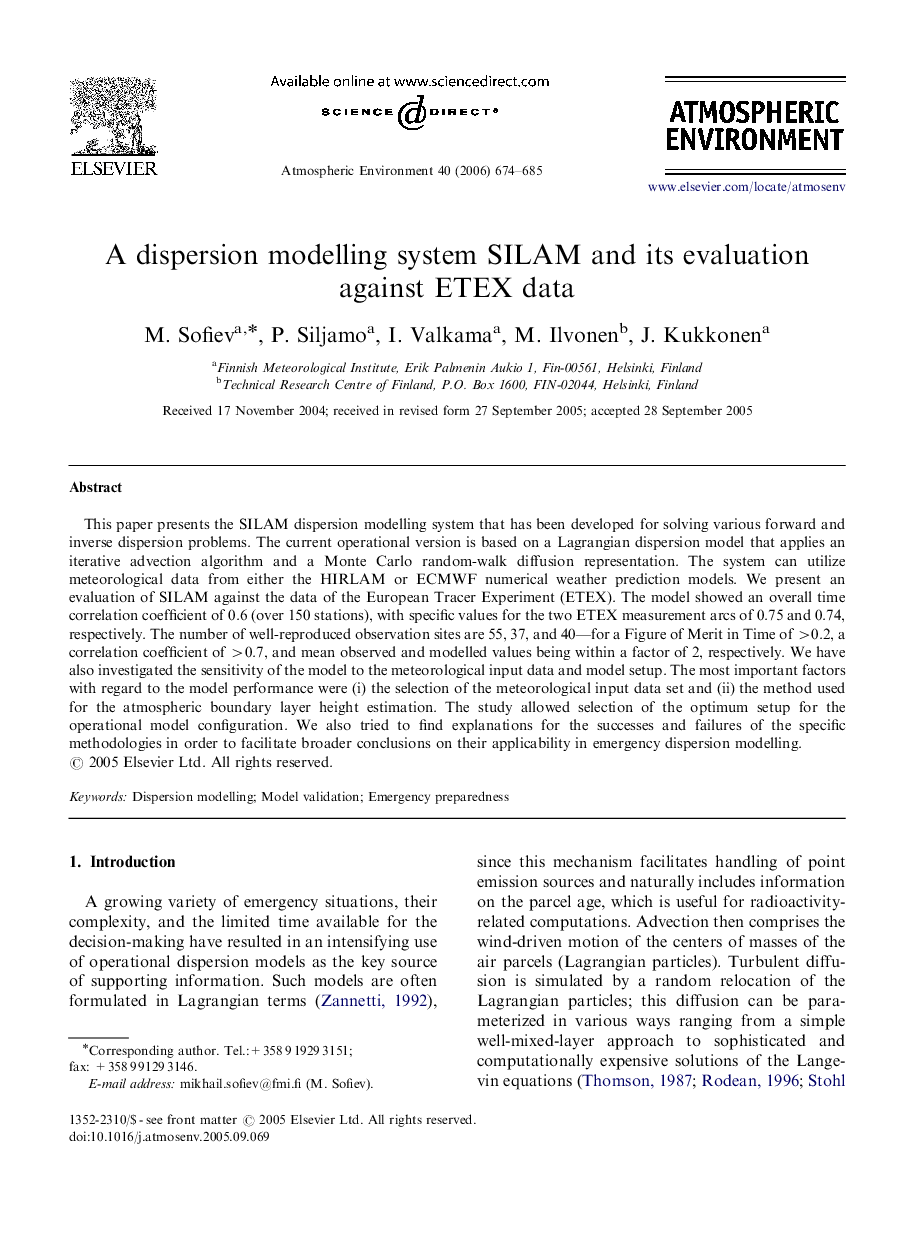| Article ID | Journal | Published Year | Pages | File Type |
|---|---|---|---|---|
| 4445039 | Atmospheric Environment | 2006 | 12 Pages |
This paper presents the SILAM dispersion modelling system that has been developed for solving various forward and inverse dispersion problems. The current operational version is based on a Lagrangian dispersion model that applies an iterative advection algorithm and a Monte Carlo random-walk diffusion representation. The system can utilize meteorological data from either the HIRLAM or ECMWF numerical weather prediction models. We present an evaluation of SILAM against the data of the European Tracer Experiment (ETEX). The model showed an overall time correlation coefficient of 0.6 (over 150 stations), with specific values for the two ETEX measurement arcs of 0.75 and 0.74, respectively. The number of well-reproduced observation sites are 55, 37, and 40—for a Figure of Merit in Time of >0.2, a correlation coefficient of >0.7, and mean observed and modelled values being within a factor of 2, respectively. We have also investigated the sensitivity of the model to the meteorological input data and model setup. The most important factors with regard to the model performance were (i) the selection of the meteorological input data set and (ii) the method used for the atmospheric boundary layer height estimation. The study allowed selection of the optimum setup for the operational model configuration. We also tried to find explanations for the successes and failures of the specific methodologies in order to facilitate broader conclusions on their applicability in emergency dispersion modelling.
